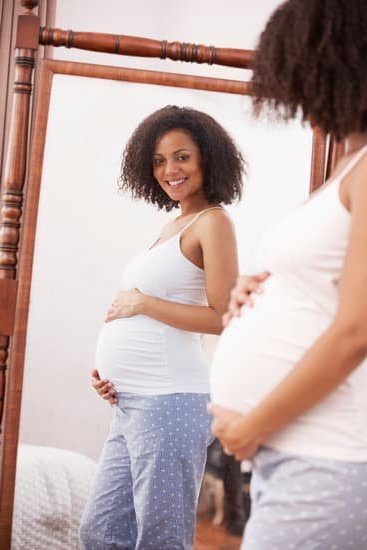Are you experiencing cramping during early pregnancy and wondering if it’s normal? It is common for women to experience cramping in the early stages of pregnancy, and it can often be a source of concern for many expectant mothers. In this article, we will explore the various aspects of cramping during early pregnancy and provide valuable information to help you understand and manage this symptom.
Cramping during early pregnancy can be a cause of anxiety for many women, but understanding the reasons behind it can provide reassurance. In this section, we will delve into the possible causes of cramping during early pregnancy, including both normal physiological changes in the body and potential complications that may require medical attention. By gaining a better understanding of why cramping occurs, you can approach this symptom with confidence rather than fear.
We will also discuss the different types of cramping that women may experience during early pregnancy, as well as how to differentiate between normal cramping and warning signs that may indicate a potential issue. Additionally, we will provide tips for managing cramping during early pregnancy, along with guidance on when it is important to seek medical assistance. By arming yourself with knowledge, you can navigate through this aspect of early pregnancy with peace of mind and confidence.
What Causes Cramping During Early Pregnancy?
Cramping during early pregnancy is a common concern for many expecting mothers. Understanding the causes of these cramps can help alleviate anxiety and provide reassurance during this delicate time. It is essential to recognize the various factors that contribute to cramping, as well as when it may signal a potential issue requiring medical attention.
One of the primary reasons for cramping during early pregnancy is the implantation of the fertilized egg in the uterine lining. This process, known as implantation cramping, typically occurs around 6-12 days after conception and may cause mild discomfort or a sensation similar to menstrual cramps. Additionally, hormonal changes, such as increased progesterone levels, can also lead to uterine muscle contractions, further contributing to cramping.
Another possible cause of cramping during early pregnancy is the stretching and expansion of the uterus as it accommodates the growing embryo. This type of discomfort is commonly referred to as “growing pains” and is a natural part of the body’s preparation for pregnancy. However, it’s essential to note that severe or persistent cramping should be evaluated by a healthcare provider to rule out any potential complications.
In some cases, conditions such as ectopic pregnancy or miscarriage can also manifest through abdominal pain or cramping during early pregnancy. While these instances are relatively rare, it’s crucial for pregnant individuals to be aware of the warning signs associated with these conditions and seek medical attention if they experience intense or prolonged cramping coupled with other concerning symptoms.
| Cause | Description |
|---|---|
| Implantation | The process of the fertilized egg attaching to the uterine lining. |
| Uterine Expansion | The stretching and growth of the uterus to accommodate the developing embryo. |
| Complications | Potentially serious issues like ectopic pregnancy or miscarriage. |
Types of Cramping to Watch Out for During Early Pregnancy
Experiencing cramping during early pregnancy can be a cause for concern for many women. It is important to understand the types of cramping that may occur and when to seek medical attention.
One common type of cramping during early pregnancy is implantation cramping. This occurs when the fertilized egg attaches itself to the uterine lining, and may cause mild cramping and light spotting. This type of cramping is usually considered normal and is not a cause for concern.
Another type of cramping to watch out for is ectopic pregnancy cramping. Ectopic pregnancies occur when the fertilized egg implants outside of the uterus, often in the fallopian tube. Cramping associated with an ectopic pregnancy may be more severe and localized on one side of the abdomen. This type of cramping requires immediate medical attention, as it can be a life-threatening condition if left untreated.
It is also important to be aware of miscarriage-related cramping during early pregnancy. Miscarriage cramps may be accompanied by heavy bleeding and severe abdominal pain. If you experience these symptoms, it is crucial to seek medical help right away.
Overall, being aware of the different types of cramping that may occur during early pregnancy can help women differentiate between normal discomfort and potential complications, providing them with peace of mind during this delicate time.
| Types of Cramping | Associated Symptoms |
|---|---|
| Implantation Cramping | Mild cramping, light spotting |
| Ectopic Pregnancy Cramping | Severe, localized abdominal pain; may be accompanied by other symptoms such as shoulder pain or dizziness |
| Miscarriage-related Cramping | Heavy bleeding, severe abdominal pain |
How to Differentiate Between Normal Cramping and Potential Complications
During early pregnancy, it is common for women to experience cramping as the uterus begins to expand and prepare for the growing fetus. However, it is important to be able to differentiate between normal cramping and potential complications that may arise. Here are some guidelines to help you understand the difference:
1. Frequency and intensity: Normal cramping during early pregnancy is often mild and occurs intermittently. It may feel similar to menstrual cramps. On the other hand, intense and frequent cramping could be a sign of potential complications such as an ectopic pregnancy or miscarriage.
2. Location of cramping: Normal cramping is usually felt in the lower abdomen as the uterus stretches and grows. However, if you experience severe cramping on one side of your abdomen or shoulder pain along with the cramping, it could indicate an ectopic pregnancy, which requires immediate medical attention.
3. Presence of other symptoms: If your cramping is accompanied by heavy bleeding, dizziness, fainting, or fever, it could be a sign of a more serious issue such as miscarriage or infection. It is essential to consult with your healthcare provider if you experience these symptoms.
By paying close attention to these factors, you can better differentiate between normal cramping during early pregnancy and potential complications that may require medical intervention. Always trust your instincts and seek prompt medical assistance if you have any concerns about the cramping you are experiencing.
Remember that every woman’s experience with cramping during early pregnancy can vary, so it’s always best to consult with your healthcare provider for personalized guidance based on your individual situation.
Tips for Managing Cramping During Early Pregnancy
During the first trimester of pregnancy, it is common for women to experience cramping as the uterus expands and the body undergoes hormonal changes. While cramping can be unsettling, there are a few tips that can help manage and alleviate discomfort during this time.
Stay Hydrated
One of the simplest yet most effective ways to manage cramping during early pregnancy is to ensure adequate hydration. Dehydration can exacerbate cramping, so it is important to drink plenty of water throughout the day. Herbal teas and electrolyte drinks can also help replenish fluids and reduce the frequency and intensity of cramps.
Practice Gentle Exercise
Engaging in gentle exercise such as prenatal yoga, walking, or swimming can help ease cramping by improving circulation and reducing tension in the muscles. It is important to consult with a healthcare provider before starting any exercise regimen during pregnancy, but staying active can often provide relief from cramping.
Use Heat Therapy
Applying a heating pad or warm compress to the lower abdomen can help relax uterine muscles and alleviate discomfort caused by cramping. It is important to use heat therapy cautiously and avoid overheating the abdominal area.
By implementing these tips for managing cramping during early pregnancy, women can find comfort and relief while navigating this crucial stage of their journey towards motherhood. It is essential to always consult with a healthcare provider if experiencing severe or persistent cramping during early pregnancy.
When to Seek Medical Attention for Cramping During Early Pregnancy
Experiencing cramping during early pregnancy can be a cause for concern for many expectant mothers. While some cramping is normal during this time, it’s important to know when it may indicate a potential complication and require medical attention. Here are some signs that you should seek medical help if you experience cramping during early pregnancy:
Signs to Watch Out For
- Severe and persistent cramping
- Cramping accompanied by heavy bleeding
- Pain or discomfort during urination
- Fever or chills
- Shoulder pain
If you experience any of the above symptoms along with cramping during early pregnancy, it’s important to contact your healthcare provider immediately. These signs could indicate a possible miscarriage, ectopic pregnancy, or other complications that require prompt medical evaluation and treatment.
It’s also crucial to trust your instincts and seek medical attention if you feel that something isn’t right, even if you don’t have any of the specific symptoms listed above. Your doctor or midwife is there to support you and ensure the health and safety of both you and your baby. Always remember that it’s better to err on the side of caution when it comes to the well-being of your pregnancy.
Real-Life Experiences
During early pregnancy, many women experience cramping, which can be a source of anxiety and worry. It is important to remember that every woman’s experience with cramping during pregnancy is unique. Here are some real-life experiences from women who have gone through cramping during early pregnancy:
Story 1: Rachel’s Experience
Rachel, a first-time mom, experienced mild cramping during the early weeks of her pregnancy. She described the sensation as similar to menstrual cramps but milder. Despite feeling worried at first, Rachel’s healthcare provider reassured her that mild cramping can be a normal part of early pregnancy as the uterus undergoes changes to accommodate the growing embryo.
Story 2: Sarah’s Experience
Sarah, a mother of two, experienced intense cramping during her second pregnancy, which caused her great concern. She visited her healthcare provider and was diagnosed with round ligament pain, a common cause of cramping in the early stages of pregnancy. Sarah was advised to take it easy and avoid sudden movements that could aggravate the discomfort.
Story 3: Emily’s Experience
Emily experienced cramping accompanied by spotting during the first trimester of her pregnancy. Worried about a potential miscarriage, she sought immediate medical attention. After thorough evaluation and an ultrasound, it was determined that Emily had a subchorionic hemorrhage, which can cause cramping and spotting in some cases. With appropriate care and monitoring, Emily went on to have a healthy baby.
These stories highlight the diverse experiences women have with cramping during early pregnancy. It is important for expectant mothers to communicate openly with their healthcare providers about any concerns or unusual symptoms they may be experiencing. Sharing experiences with other women who have gone through similar situations can also provide valuable support and reassurance during this delicate time.
Conclusion
In conclusion, cramping during early pregnancy can be a source of worry for many expectant mothers, but it is important to understand that it is a common symptom experienced by many women. By educating yourself on the causes and types of cramping, as well as knowing when to seek medical attention, you can navigate this aspect of pregnancy with confidence and peace of mind.
It is crucial to remember that not all cramping during early pregnancy is cause for concern. Normal cramping is often a result of the uterus expanding and preparing for the baby’s growth. However, it is also essential to be aware of the signs of potential complications such as ectopic pregnancy or miscarriage. Understanding these differences can help alleviate anxiety and allow you to approach any symptoms with a clear mind.
If you are experiencing cramping during early pregnancy, reaching out to your healthcare provider can provide reassurance and guidance. They can help determine if your symptoms are normal or if further evaluation is necessary. Additionally, seeking support from other mothers who have gone through similar experiences can offer comfort and understanding.
Remember that every pregnancy is unique, and what may be normal for one person may not be for another. Trust in your instincts and seek help when needed to ensure a healthy and safe pregnancy journey.
Frequently Asked Questions
How Long Should Early Pregnancy Cramps Last?
Early pregnancy cramps can vary in duration, but they typically last for a few minutes to a few hours. It’s normal to experience mild cramping as the uterus expands and the body adjusts to pregnancy.
What Does Early Pregnancy Cramping Feel Like?
Early pregnancy cramping can feel similar to menstrual cramps, with mild to moderate discomfort in the lower abdomen. Some women also report feeling twinges or sharp pains on one side of the pelvis.
When Should I Be Worried About Cramping During Pregnancy?
If you experience severe cramping, heavy bleeding, dizziness, or fever during pregnancy, it’s important to seek medical attention immediately as these could be signs of a serious issue. Additionally, persistent cramping accompanied by other symptoms should be evaluated by a healthcare provider.

Welcome to my fertility blog. This is a space where I will be sharing my experiences as I navigate through the world of fertility treatments, as well as provide information and resources about fertility and pregnancy.





